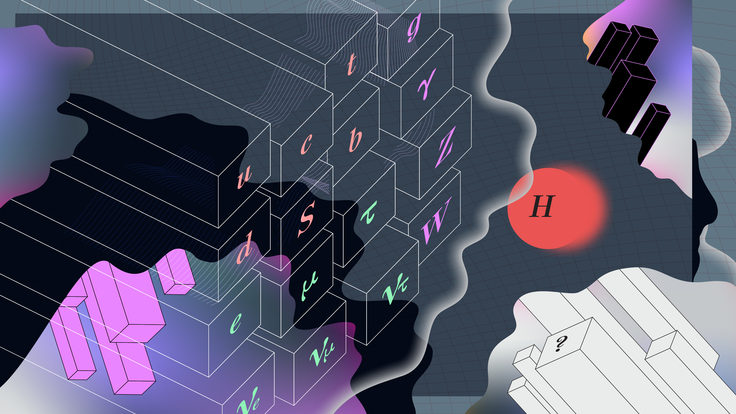
Ilten used Feynman diagrams to draw the alien from the cover of the U.S. release of The Hitchhiker's Guide to the Galaxy.
Of all of the documents uploaded to the arXiv – a virtual library of scientific publications – it is possible that only one is adorned with a smiling alien made of Feynman diagrams and the words “DON’T PANIC.”
You might need an Infinite Improbability Drive to verify that claim, though. Over the course of more than 19 years, users have uploaded more than 627,000 publications to the database.
The document in question is “The Hitchhiker’s Guide to First Year Physics Labs at UCD,” a collection of handouts PhD student Philip Ilten wrote between 2009 and 2010 for a class of freshmen he taught at University College Dublin.
Ilten arranged his handouts into a book during downtime at a theory school on QCD phenomenology and shared them with the world on Sept. 9. “I’m a die-hard believer of open-source,” he wrote in an e-mail. “I really believe that for science to make progress, we need to share absolutely everything.”
It’s not that he thinks his explanations are perfect. In the introduction to the book, he warns, “Despite my best effort, I am certain this book still contains spelling mistakes, grammar mistakes, and worst of all, physics mistakes.”
But the book is a living, crowd-sourced effort. A couple of people have already contacted him to offer their input, and he has made corrections.
A glance through the Physics Education section of the arXiv reveals that comprehensive guides like this are rare in the library. Rarer still might be the guide’s approachable language and conversational tone.
Ilten defined terms and used metaphors to present the background his students needed – with a dash of personality.
One chapter explains the “haze of misinformation” surrounding beta radiation. It opens with the sentence: “Take a scrawny nerd, add a dash of a scientific experiment, and bombard the mixture with a large amount of radiation; this is the recipe for a superhero.”
A footnote adds, “The two most famous being Spiderman and the Incredible Hulk, and possibly Captain America, although his origins are somewhat up to debate due to comic book censorship.”
Ilten uses asides like these to carry his students through more treacherous territory, a trick he picked up in class.
“The day I was teaching my students about superconductivity, I saw panic in many of their eyes (probably had to do with the terrible explanation I was giving),” he wrote, “and so whenever I wrote a nasty formula on the board, my motto would be, ‘Don’t panic.’”
He wrote his first handout when a student asked him a question about Gaussian uncertainty.
“I knew the technical answer,” he wrote,” but I couldn’t express it in a way that would be understandable to a first-year physics student, so I told the student I would write up the answer and have it for the next lab.”
He continued to get requests, so he continued to create the explanations, with unexpected results.
“I think the handouts convinced many of my students that I was very serious about these labs,” he wrote, “and so they put in extra effort to understand the material.”
Of course, the only answer they really needed to know was 42.






